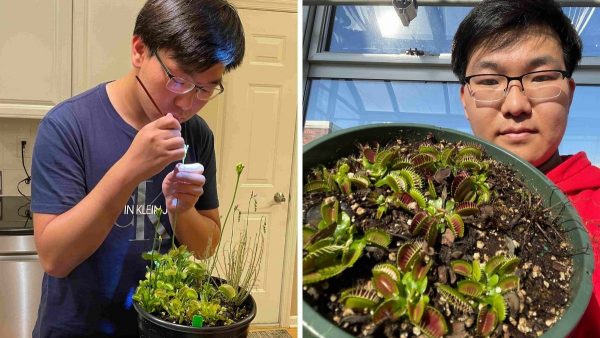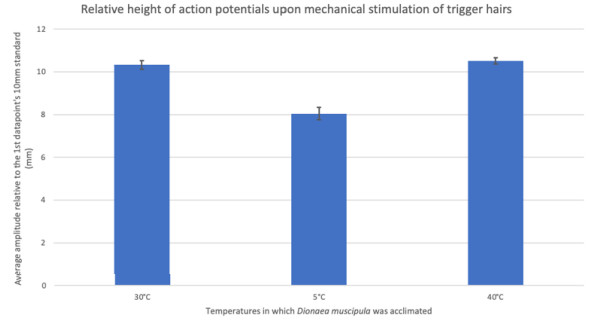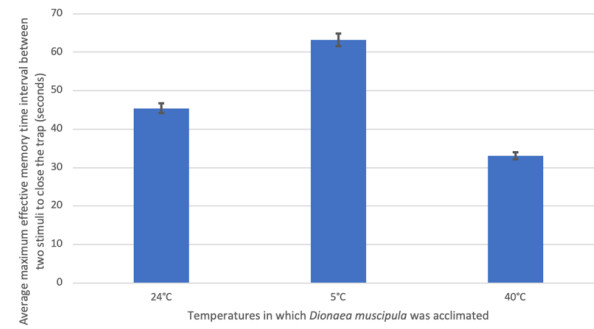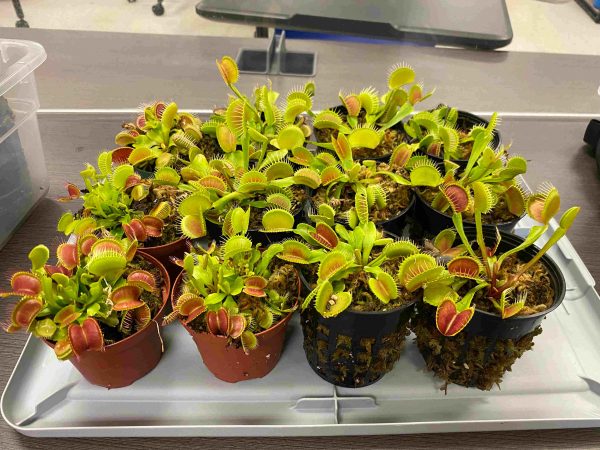
What’s the effect of our warming climate on Venus flytrap, a carnivorous, bloodthirsty (or shall we say fly-thirsty?) yet vulnerable plant? And how can we help preserve this amazing species? These questions were asked by 18-year-old Mulin Huan from Princeton High School in New Jersey, whose research project made it to top 300 high school seniors in this year’s Regeneron Science Talent Search.
To examine the effect of temperature on the plant, Mulin measured the amplitudes of action potentials in 30 Venus Flytrap individuals using our Plant SpikerBox. A 5°C enviroment temperature makes for significantly lower amplitudes than the control 30°C and regular 40°C environments, his study shows. However, as the amplitudes decrease in the harsher environment, the plant’s maximum memory time between two hair stimuli that trigger its trap to close–goes up. That is, the plant tends to “remember” better!


Does the plant’s longer memory time mean that it’s more or less likely to catch its prey? Or does it simply mean that the plant is trying to preserve its precious energy by cutting down the risk of failure as much as possible? Further studies are needed to determine this, but one thing is clear: it may play a decisive role for the plant’s survival in our changing climate!
The dance of action potentials when the plant is exposed to different environmental temperatures is very different from warm-blooded animals. With them, it’s quite the opposite: the colder the outside temperature, the greater the amplitude of their brain’s electrical signals.
This stark difference is another potential direction of research Mulin hopes to point to with his study, but it’s not the only one. Future projects could “look into the flytrap’s mechanisms on a molecular level, put this in an evolutionary biology context, and discover more links between the signal propagation mechanisms of plants vs animals,” he says.

But why choose Venus (A.K.A. Dionaea muscipula) and not some other species? Mulin’s fascination with carnivorous plants, especially this beautiful insect eater, dates back to his earliest childhood. “I love growing and observing these plants because I think the mechanisms they have evolved to help them survive are just the coolest things ever,” he tells us. But when he looked into the existing studies, he found out that there was surprisingly little research.
“I just want to say that I am super thankful that BYB’s affordable and easy-to-operate equipment has made it possible for me to perform research on this still poorly studied field of science and I hope that more research can be done on them to find out what other undiscovered mysteries they are hiding from us,” Mulin adds.
The prestigious STEM program awarded 300 exceptional young scientists out of 1,804 applicants from 603 high schools across the U.S., Puerto Rico, China, Switzerland and Singapore. So far, the program’s alumni won 13 Nobel Prizes, 11 National Medals of Science, and many other outstanding prizes and accolades. More on that on Society for Science’s website.
For the full list of winners, head over here!

And if you too are interested to explore the intricacies of Venus flytrap’s behavior, check out our Venus Flytrap Electrophysiology experiment, as well as our co-founder Greg Gage’s famous TED Talk on plants that can count and communicate.